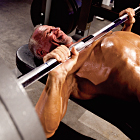 Q: How is your recovery from your shoulder surgery going? Are you going to compete again? If so, what adjustments will you make to your training? I’m 49 and have just had a shoulder surgery similar to yours. I’m looking for some training guidance.
Q: How is your recovery from your shoulder surgery going? Are you going to compete again? If so, what adjustments will you make to your training? I’m 49 and have just had a shoulder surgery similar to yours. I’m looking for some training guidance.
A: Thanks for asking about my shoulder—even if it was to get information on your own recovery. I’m now about eight months postsurgery, and I feel that I’m finally making significant progress.
For those who don’t know, I had surgery on October 8, 2012, to repair a torn labrum, shave off a couple of bone spurs—which were damaging my rotator cuff tendon—and remove a bunch of cartilage that was floating around my right shoulder joint. My doctor said, “It looked like a snow globe in there.” My rehab went extremely well for the first two months. In early December I was cleared to start lifting again.
I started very light and was making fantastic progress in regaining strength and muscle. In late December I was just rolling over in bed to turn off my lamp when my shoulder popped. It was loud and painful. That mishap set me back to square one in my rehab. I had to stay away from upper-body training for several weeks. Then I started back with my physical therapy exercises and very, very light lifting.
It’s been a slow process, but my shoulder is starting to feel pretty good again. Okay, not good, but significantly better. I can do all of my chest and shoulder exercises again, even overhead presses.
Yes, I’m going to compete again. I’m going to enter the pro men’s physique division at the Europa Super Show in Dallas on August 16 and 17 (Ed and Betty Pariso put on tremendous events). I know some of my fans will be appalled that I’m going to physique and would like to know why. There are two reasons. To begin with, the IFBB moved the 202-and-under class up to 212 last year. I compete weighing between 170 and 175. There’s no way I’ll make a dent in that class without taking the bodybuilding drugs that I’m not willing to take.
Second, I’m thinking that because of the shoulder surgery my upper body may not be as big as it can be. For men’s physique I don’t need as much size, so I think my chances will be better. Now, I realize that I may not have enough “pretty boy” in me to be competitive in this division, and I may be too muscular. If that’s the case I’ll just go back to bodybuilding next year with a shoulder that should be 100 percent by then. And, for my Seattle-area fans, I’ll be guest posing at the ’13 NPC Washington Ironman Naturally in October—a bodybuilding guest-posing routine, not just a physique modeling walk.
Now to get to the meat of your question, here’s how my training is going to change. Since I suffered atrophy, particularly on the right side of my upper body, I need to train intensely enough to put muscle back on without reinjuring my shoulder. I have decided (at least initially) to train upper body three times per week using Steve Holman’s 4X training (four sets of 10 reps with only 30-second rests) for the bulk of my upper-body workouts. That way I can keep the weights fairly light but still adequately fatigue the muscles to spur growth.
One of the other things I’ve found is that I need to stop my sets short of failure. Since I’m not training as heavy or going all the way to failure on any upper-body sets, I’m able to train upper body more often. So far this approach is working like a charm!
Another thing that I’m doing is keeping up with my physical therapy exercises. I do my tubing-band exercises as a warmup. When you do these, just remember that they are therapy. You shouldn’t push them to the point that you’re getting a burn. These exercises are for pumping blood into the smaller muscles to continue the healing process in the shoulder. Don’t treat them like bodybuilding exercises.
In terms of exercise selection for my bodybuilding workouts, I’m not changing anything. I love sticking with the basics. If I start with an exercise and it’s hurting my shoulder that day, however, I’ll try some other stuff until I find something that feels comfortable. I love training hard and heavy on the basic exercises, but with the shoulder still recovering, I have to be more flexible and innovative.
As you get back into your training postsurgery, always remember to listen to your doctors. They are much more experienced with recovery than we are. Even if you feel that you can do a lot more, take things slowly and gradually. Slow, steady progress will get you back to 100 percent more quickly than taking two steps forward and three steps back. Keep up with your physical-therapy exercises, and be smart with your training. Eat clean, get plenty of rest, and keep me apprised of your progress.
Editor’s note: See Dave Goodin’s blog at www.IronManMagazine.com. Click on Blogs in the top menu bar. Check out his new Web site at Shredderbuilt.com. To contact Dave directly, send e-mail to [email protected] IM
















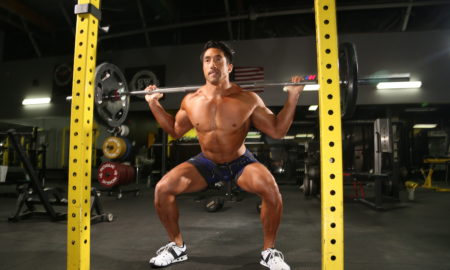
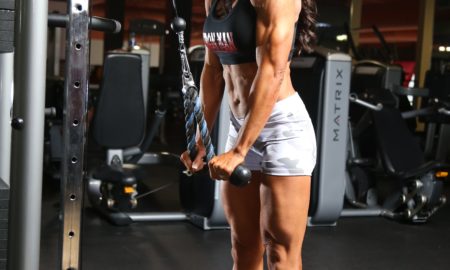
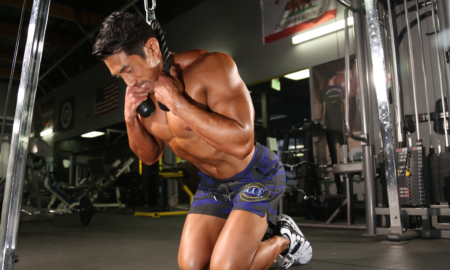
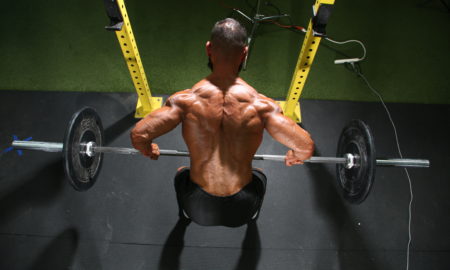
You must be logged in to post a comment Login